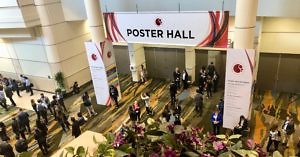Will 2020 be an inflection year for Kura Oncology?

A wet gloomy day in San Francisco was brightened up by some small biotech talks
San Francisco – The other day I mentioned that we could expect some cross pollination across several recent conferences and this latest post on Kura Oncology is one such example of that genre.
We’ve been following their story longitudinally for a while now and with a lot suddenly going on, 2020 could well turn out to be an crucial year for the company.
There is no doubt they have been pursuing a very focused precision medicine approach with tipifarnib and executing nicely on that strategy so far, but as more indications and additional pipeline agents move into the clinic do the same principles still apply?
To find out, we interviewed a couple of their senior executives and discussed both current progress as well as where they are headed…
To learn more from our oncology coverage and get a heads up on our latest commentary from the JPM and ASH annual meetings, subscribers can log-in or you can click to gain access to BSB Premium Content.
This content is restricted to subscribers



 San Francisco – the 2020 JP Morgan Healthcare conference is now in full swing, and we’re continuing our coverage with another rolling blog that provides review and analysis of company presentations, deals, and plans for the coming year.
San Francisco – the 2020 JP Morgan Healthcare conference is now in full swing, and we’re continuing our coverage with another rolling blog that provides review and analysis of company presentations, deals, and plans for the coming year. Earlier this month, Incyte announced the phase 3 trial miss for their JAK1 inhibitor in acute graft versus host disease (GVHD), perhaps coming as a surprise to a few observers familiar with the positive ruxolitinib result, but not so much to clinicians.
Earlier this month, Incyte announced the phase 3 trial miss for their JAK1 inhibitor in acute graft versus host disease (GVHD), perhaps coming as a surprise to a few observers familiar with the positive ruxolitinib result, but not so much to clinicians.




